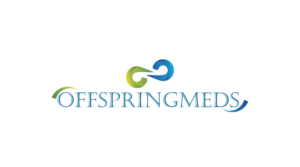Workplace accidents, injuries, and health incidents can lead to costly disruptions, legal issues, and reputational damage. As a result, organisations are prioritising safety training to ensure compliance and protect their workforce. Enrolling employees in a workplace health and safety course equips them with the knowledge and practical skills to identify hazards, follow regulations, and respond effectively to emergencies. There are various training options available, and choosing the right safety course in Singapore can make a significant impact on day-to-day risk management.
Promotes Hazard Awareness and Prevention
One of the most immediate benefits of a workplace health and safety course is its focus on hazard identification. Employees are trained to recognise unsafe behaviours, poor practices, and environmental risks that may lead to accidents or injuries. This proactive awareness reduces the likelihood of incidents occurring, as employees can take corrective actions before a situation escalates.
Courses typically cover risk assessment, control measures, and maintaining safe working environments. Employees become active participants in safety culture with this information. It can reduce dependence on supervisors or safety officers alone. This shared responsibility significantly lowers exposure to operational hazards across various industries.
Improves Emergency Preparedness and Response
A well-structured safety course in Singapore includes emergency protocols for situations such as fires, chemical spills, electrical faults, and medical emergencies. Training helps employees respond quickly and calmly, which can reduce the severity of accidents and save lives. Participants learn how to use firefighting equipment, follow evacuation procedures, and administer basic first aid where necessary.
These courses also emphasise the importance of communication during emergencies, helping staff understand their roles within a response team. Regular drills and refresher training reinforce preparedness and ensure that employees can act decisively in real-world scenarios. A workforce with confidence in emergency handling reduces panic, confusion, and delays.
Ensures Compliance with Legal and Industry Standards
Singapore enforces strict workplace safety regulations through the Ministry of Manpower (MOM) and the Workplace Safety and Health Council. Failure to comply with these regulations can lead to fines, stop-work orders, or even legal prosecution. A workplace health and safety course ensures that employers and employees understand their legal responsibilities and operate within the framework of national safety standards.
Most safety courses in Singapore align with industry-specific requirements, covering construction, logistics, manufacturing, and healthcare sectors. Tailored training helps organisations maintain audit readiness and meet certification criteria such as bizSAFE or ISO standards. This protects the organisation from penalties and boosts its credibility when bidding for contracts or undergoing compliance checks.
Reduces Costs from Accidents and Insurance Claims
Workplace injuries result in direct costs such as medical expenses, compensation claims, and lost productivity. Indirect costs—like staff shortages, equipment damage, and morale issues—can have long-term implications on business operations. By investing in a safety course in Singapore, businesses reduce the frequency and severity of incidents, which reduces these costs.
Furthermore, insurance premiums are often tied to an organisation’s safety record. Demonstrating a commitment to employee safety through certified training programmes can reduce premiums over time. A safer workplace also minimises absenteeism and turnover, allowing businesses to maintain consistent productivity and retain experienced staff.
Fosters a Positive Workplace Safety Culture
A workplace health and safety course contributes to building a safety-first mindset across all levels of the organisation. When employees see management prioritising safety through training and practices, they are more likely to adopt the same mindset. This collective awareness leads to better communication, accountability, and peer-to-peer safety reinforcement.
Long-term success in workplace safety requires more than policies—it requires a culture where employees feel empowered and responsible for their own well-being and that of their colleagues. Continuous education and periodic refresher training help reinforce this culture and adapt it to new risks or operational changes.
Conclusion
Enrolling in a workplace health and safety course is a practical and cost-effective way to reduce on-the-job risks. From hazard prevention and emergency response to regulatory compliance and safety culture, these courses play a vital role in keeping employees and organisations protected. With many safety courses in Singapore offering tailored options, there’s no reason to delay investing in safer working environments.
Contact MDIS today to explore workplace safety courses in Singapore designed to meet your industry needs and reduce operational risks effectively.

